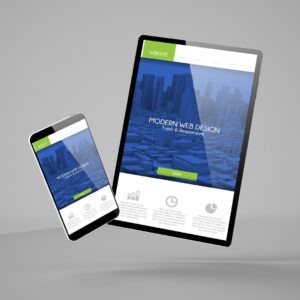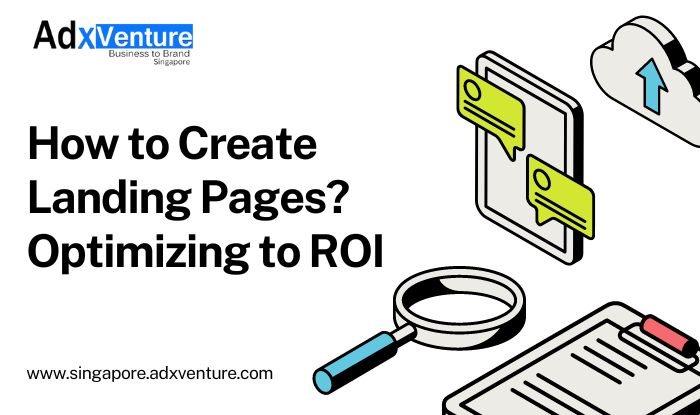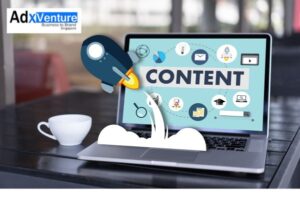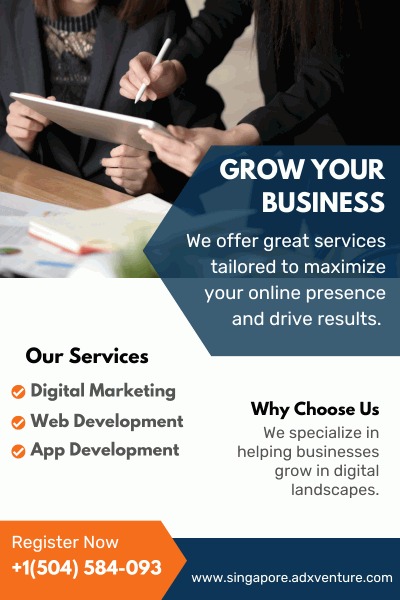How to Create Landing Pages? Optimizing Conversions and ROI
In the fast-paced digital world, businesses are constantly seeking ways to enhance their online presence and convert visitors into valuable customers. One of the most powerful tools in their arsenal is the landing page. A well-crafted landing page has the potential to captivate, engage, and persuade visitors to take action, thus boosting conversions and return on investment (ROI). In this blog, we (AdxVenture Singapore) will explore the art of creating killer landing pages that maximize conversions and ensure a strong ROI.
How to Create Landing Pages?
Before delving into the nitty-gritty of optimization, let’s first grasp the fundamental purpose of a landing page. In simple terms, a landing page is a standalone web page designed with a specific goal in mind. Unlike a website’s homepage, which serves as a gateway to various sections, a landing page is focused on driving visitors towards a single call-to-action (CTA). This CTA can be anything from subscribing to a newsletter, signing up for a webinar, downloading an ebook, or making a purchase.
A successful landing page relies on a combination of aesthetics, persuasive copy, and seamless user experience. The ultimate objective is to convert visitors into leads or customers, making it an essential element of any online marketing campaign.

Identifying Your Target Audience
To create a compelling landing page, you must first identify and understand your target audience. Every successful marketing campaign begins with comprehensive market research. Consider the following questions:
- Who are your ideal customers?
- What are their pain points, desires, and interests?
- What motivates them to take action?
- Which demographics and psychographics define your audience?
By answering these questions, you can tailor your landing page to speak directly to your target audience, establishing a strong connection and increasing the likelihood of conversion.
Crafting an Irresistible Headline
Your headline is the first thing visitors see when they land on your page. It needs to be clear, attention-grabbing, and relevant to the offer. A strong headline must address the main benefit or solution your product or service provides. It should also be aligned with the ad or link that brought the visitor to the landing page in the first place, ensuring a seamless transition from their initial interest to the landing page.
Keep the headline concise and use powerful, action-oriented language to convey the value proposition. Remember, you only have a few seconds to capture the visitor’s attention and entice them to stay on the page.
Crafting Compelling Copy
While a captivating headline may get visitors to stick around, it’s the copy that will ultimately convince them to take action. Your landing page copy should be persuasive, benefit-driven, and focused on the customer.
Follow these copywriting best practices:
- Speak to the Customer: Use “you” and “your” frequently to make the reader feel personally addressed.
- Highlight Benefits: Focus on the benefits of your product or service, explaining how it can solve the customer’s problem or improve their life.
- Keep it Scannable: Break up the text into short paragraphs and use bullet points to make the content easy to read and digest.
- Build Trust: Incorporate testimonials, reviews, or case studies to build trust and credibility with your audience.
- Use Urgency: Create a sense of urgency by emphasizing limited-time offers or limited availability.
- Be Transparent: Clearly state what the visitor will get by taking the desired action. Avoid any misleading information that might lead to disappointment.
Crafting an Engaging Visual Design
Humans are visual creatures, and the visual elements of your landing page play a crucial role in its success. A cluttered or unattractive design can immediately turn off visitors and increase bounce rates.
Here are some design tips to create an engaging landing page:
- Clear and Relevant Imagery: Use high-quality images and visuals that directly relate to your offer. Whether it’s a product photo or a representation of your service’s outcome, visuals should enhance the message, not distract from it.
- Consistent Branding: Ensure your landing page aligns with your brand’s overall look and feel, including colors, fonts, and logos. Consistency helps build trust and reinforces your brand’s identity.
- Whitespace Utilization: Leave enough whitespace around key elements to make them stand out and improve readability.
- Mobile Responsiveness: With a significant portion of internet traffic coming from mobile devices, make sure your landing page is fully optimized for mobile viewing.
- Clear Call-to-Action (CTA): Make your CTA button stand out using contrasting colors and persuasive copy. It should be obvious what action you want visitors to take.
- A/B Testing: Continuously experiment with different designs to identify what resonates best with your audience. A/B testing allows you to optimize your landing page for better conversions continually.
Optimizing Page Load Speed
In today’s fast-paced digital world, page load speed can significantly impact user experience and, subsequently, your conversion rate. According to various studies, even a one-second delay in page load time can lead to a significant increase in bounce rates.
To optimize page load speed:
- Compress Images: Use image compression techniques to reduce the file size without compromising on quality.
- Minimize HTTP Requests: Reduce the number of requests the browser needs to make to fetch all the elements of your page.
- Utilize Caching: Leverage browser caching to store frequently accessed resources, reducing load times for returning visitors.
- Choose the Right Hosting: Opt for a reliable and fast web hosting provider to ensure your landing page loads swiftly.
- Simplify Code: Minimize CSS and JavaScript files to streamline your landing page’s code.
- Content Delivery Network (CDN): Use a CDN to distribute your landing page’s assets across various servers worldwide, reducing latency for users in different locations.
Implementing Trust Elements
Trust is a vital factor when it comes to persuading visitors to take action on your landing page. Since many people may be skeptical about sharing their information or making a purchase online, it’s crucial to incorporate trust elements that alleviate their concerns.
Some trust elements to include on your landing page are:
- Security Badges: Display recognizable security badges that assure users their information is safe and secure.
- Privacy Policy: Link to a clear and transparent privacy policy that outlines how you handle customer data.
- Testimonials and Reviews: As mentioned earlier, incorporate genuine testimonials and reviews to showcase positive experiences from previous customers.
- Money-Back Guarantee: Offer a risk-free option like a money-back guarantee to increase confidence in your product or service.
- Certifications and Awards: If applicable, showcase any relevant certifications or awards that highlight your credibility.
Crafting an Effective CTA
The call-to-action (CTA) is the linchpin of your landing page’s success. It must be clear, compelling, and aligned with the page’s objective on how to create landing pages? The CTA button should stand out visually, making it easy for visitors to spot and interact with.
To create an effective CTA:
- Use Action-Oriented Language: Use action verbs that prompt the user to take action immediately.
- Create a Sense of Urgency: Encourage immediate action by using phrases like “Limited Time Offer,” “Act Now,” or “Last Chance.”
- Keep it Short and Sweet: Make the CTA button text concise and to the point.
- Contrasting Colors: Choose a color that contrasts with the rest of the page’s design to make the CTA stand out.
- Placement Matters: Position the CTA above the fold so that it’s visible without the need for scrolling.
- A/B Test: Test different CTAs to see which wording, color, or placement works best for your target audience.
Tracking and Analyzing Performance
Once your landing page is live, the work doesn’t end there. To continuously improve its performance, you need to track and analyze its metrics regularly. Monitoring key performance indicators (KPIs) will help you understand how well the page is converting visitors into leads or customers.
Some essential metrics to track include:
- Conversion Rate: The percentage of visitors who take the desired action on your landing page.
- Bounce Rate: The percentage of visitors who leave the landing page without taking any action.
- Time on Page: How long visitors spend on your landing page before exiting.
- Click-Through Rate (CTR): The percentage of visitors who click on your CTA button.
- Scroll Depth: How far visitors scroll down your landing page before leaving.
- Sources of Traffic: Identify which marketing channels are driving the most traffic to your landing page.
“Use analytics tools like Google Analytics or other marketing automation platforms to gather data and insights. Based on this data, you can make informed decisions and implement changes to optimize your landing page for even better results. I hope you got all your answers related on how to create landing pages?”








